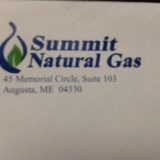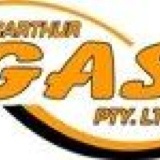Information
-
Audit Type
-
Document No.
-
Job Order / Project Name
-
Conducted on
-
Prepared by
-
Location
-
Personnel
Main Line Audit
1.0 - Project Set Up
-
Project Set Up
-
Tie in plan properly prepared
-
Corrosion recommendation
-
Proper traffic control plan
-
Pre-job safety briefing held
-
Line locates
-
Inspector on site, OQ Valid, demonstrated access to gas standards, facility maps, and required permits
-
Primary contributor to unsatisfactory results.
2.0 - Pipe Joining
-
Welding
-
OQ Valid / Welding certification card
-
Demonstrated the ability to interpret and carry out the specific requirements of the welding process being used (in accordance with Procedure Qualification Record (PQR) and Welder Test Record (WTR), API Standard 1104, ASME B31.8)
-
Used an approved welding process for the type weld being performed
-
Properly prepared the welding surfaces prior to welding (machining, grinding, cutting, brushing)
-
Properly aligned and secured facing surfaces and ensured the proper root openings (pipe-to-pipe or pipe- to-fitting)
-
Inspected the area to be welded to ensure proper dimensions as per API Standard 1104; verified permissible mismatch for pipe wall thickness or out-of-round pipe and used machined fittings to eliminate mismatch where required
-
Protected the others near the welding area from the arc rays by use of a non-reflecting curtain (as applicable)
-
Ensured that the work area had adequate ventilation and plenty of fresh air
-
Used caution when working in the vicinity of combustible gasses or liquids
-
Kept electrodes dry
-
Kept equipment in good condition and any electrical connections used were tight, clean, dry, and properly insulated
-
Kept area where welding was performed as clean and dry as possible
-
Used correct size welding cable
-
Properly attached the ground clamp to the pipe or fitting to insure sound e,ectrical connection and in such a way as to prevent arc burn to the adjoining pipe or fitting surfaces
-
Demonstrated the ability to recognize/react (physically or verbally) to adverse weather conditions
-
Located and staggered the start of each weld pass at a different point of initiation
-
Demonstrated (physically and verbally) the ability to recognize an unacceptable weld and to remove and/or repair the weld
-
Applied welder identification number as specified in company procedure
-
Butt Fusion
-
OQ Valid
-
Properly inspected/prepared pipe surfaces
-
Pipe properly aligned
-
Followed manufacturer's instructions
-
Equipment in good condition
-
Verified proper heater plate temperature (400-450 degrees F)
-
Hydraulic machine pressure set correctly
-
Hydraulic machine controls operated in correct sequence
-
Maintained fusion pressure while allowing joint to cool
-
Allowed joint to cool for the specified time before removing clamp
-
Inspected joint for quality; removed if unacceptable
-
Socket Fusion
-
OQ Valid
-
Properly inspected/prepared pipe surfaces
-
Followed manufacturer's instructions
-
Chamfered pipe ends with proper tool
-
Properly positioned cold ring clamp
-
Verified proper heater plate temperature (500 degrees +/- 10 degrees)
-
Applied heat for the specified time
-
Quickly checked the melt to ensure it was complete
-
Inserted pipe into fitting until cold ring was flush with the fitting, being careful not to torque or rotate the pipe or fitting during insertion
-
Allowed joint to cool for the specified time before removing clamp
-
Inspected joint for quality; removed if unacceptable
-
Electrofusion
-
OQ Valid
-
Properly inspected/prepared pipe surfaces
-
Followed manufacturer's instructions
-
Scraping satisfactory
-
Fitting and prepared surfaces clean and dry
-
Fitting positioned and clamped correctly
-
Proper marking
-
Used proper extension cord
-
Conditioned fittings and control box to work-site temperature
-
Verified that the control box identified the correct connected fitting
-
Employee was out of the excavation prior to starting the fusion process
-
Allowed joint to cool for the specified time before removing clamp
-
Inspected joint for quality; removed if unacceptable
-
Mechanical Fitting
-
OQ Valid
-
Compression / Bolted Type Fittings
-
Properly inspected/prepared pipe surfaces
-
Followed the manufacturer's installation instructions
-
Marked stab depth
-
Checked the proper alignment/stab depth
-
Inspected joint for quality; removed if unacceptable
-
Stab Type Fittings
-
Properly inspected/prepared pipe surfaces
-
Followed the manufacturer's installation instructions
-
Chamfered/shaped the pipe ends with correct tool for the fitting being used
-
Marked stab depth
-
Stabbed the pipe into the fitting to the proper depth
-
Inspected joint for quality; removed if unacceptable
-
Primary contributor to unsatisfactory results.
3.0 - Pipe Installation
-
OQ Valid
-
Material inspection and Proper Pipe Handling/Storage
-
Inspected pipe for defects, damage and age requirements as applicable
-
Rejected pipe for deficiencies found or made necessary repairs
-
Steel pipe joints 6" and greater in diameter were mechanically lifted using slings, other approved method (no bare cables, chains, metal bars, etc.)
-
Pipe protected from damage
-
Pipe properly tiered when stacking joints
-
Pipe stored away from high-voltage areas
-
Open Cut Installation
-
Located all underground facilities prior to excavating/boring
-
Installed pipe with the proper cover
-
Installed to withstand anticipated external loads whenever minimum cover requirements cannot be met
-
Maintained proper clearance with other underground structures
-
Plastic pipe located away from buried power cables or steam lines
-
Maintained proper trench width
-
Damage tile, etc. repaired or replaced
-
Trench bottom properly prepared (smooth surface, padded as required)
-
Piping properly placed in trench
-
Prevented damage to coatings, pipe wall
-
Plastic piping was not supported by blocking
-
Steel piping that was supported by blocking insulated (rock shield, fiberglass)
-
Bore Installation
-
Proper boring methods used
-
Consideration given to secondary damage
-
Consideration given to pipe or coating damage during insertion
-
Annular space between pipe and bore hole kept to a minimum
-
Filled unsuccessful bore holes 6" and larger
-
Closed open pipe ends prior to insertion
-
Used a "weak link" on pulls 100' or greater
-
Joints welded or fused
-
Pipe examined for damage
-
Casing Installation
-
Properly inserted main in casing
-
Plastic used as casing only when authorized
-
Vents installed only when required
-
Vents properly sized (no less than 2" in diameter)
-
Carrier pipe not permitted in above ground casing
-
Cut casing windows for services whenever possible prior to insertion (used "window cutter" to remove casing)
-
Insulating spacers used on coated pipe (maximum recommended spacing @ 10' apart)
-
At least 5' of leading end of carrier pipe inspected after insertion
-
Plastic pipe continuously supported where it enters and leaves the casing
-
End seals installed on steel carrier pipe following the manufacturer's installation instructions
-
Cathodically protected
-
Casing filler installed as applicable
-
Insertion Method
-
Used plastic main as carrier (unless steel is authorized)
-
Maintained approved "pipe cover" requirements
-
Carrier pipe electrically inspected for holidays prior to insertion
-
Leading end of carrier pipe closed prior to insertion
-
At least 5' of leading end of carrier pipe inspected after insertion
-
Provided restraint at tie-ins to metallic mains
-
Pipe continuously supported where it enters and leaves the casing
-
Support shims installed (between pipe sections removed to enable insertion of plastic)
-
Valve Installation
-
Recognized valve installation requirements
-
Metal valve boxes may not be installed in contact with the main and must be supported
-
Valves installed per manufacturer's installation instructions
-
Steel valves installed in plastic systems must be installed to minimum torsional or shearing loads
-
Tracer Wire Installation
-
Installed tracer wire/electronic markers
-
Installed with all non-cased plastic main
-
Made accessible for above-ground connection (free ends coated)
-
Wire connections properly made and protected against corrosion (dielectric tape or material covered with plastic tape)
-
Installed warning tape
-
Properly placed line markers
-
Steel Pipe Bending
-
Used proper bending methods
-
Followed the maximum deflection guidelines (per procedure)
-
Used a number of bends whenever larger degrees are needed to met needs
-
Recognized that wrinkle bends are prohibited
-
Recognized that the bend must be at least 1 1/2 pipe diameters from the pipe end
-
Properly placed pipe seam prior to bending
-
Applying Corrosion Control
-
OQ Valid
-
Followed design and manufacturer's instructions for installation of corrosion control materials
-
Backfilling
-
Special fill was used as appropriate
-
Excavated rocks removed or proper padding used
-
Rock shield used as appropriate
-
Backfill was thoroughly compacted, especially at branch connections, to prevent additional pipe stress
-
Hydrohammers used only when at least 24" of cover was maintained
-
Backhoes we're not used for tamping
-
Primary contributor to unsatisfactory results.
4.0 - Install/Replace/Repair Meter & Regulator Sets
-
Meter and Regulator Set
-
OQ Valid
-
Installed meter and regulator set to minimize anticipated stress on connecting pipe and meter
-
Ensured that materials met the pressure rating standards for the application
-
Located regulator vent at a place where gas from the vent can escape freely into the atmosphere and way from any opening into the building
-
Verified that the regulator vent faced downward and was protected with an insect screen
-
Ensured that the vent pipe was sized no smaller than the manufacturer's vent connection
-
Located meter set in a position to minimize exposure to hazards from traffic
-
Installed the meter set in an easily accessible location
-
Locked/Disked as applicable
-
Verified regulator output pressure was correct for the system served
-
Verified that the meter setting was properly insulated
-
Checked for leakage
-
Primary contributor to unsatisfactory results.
5.0 - Pressure Testing/Tie-in/Purging
-
Pressure Testing
-
OQ Valid
-
Backfilled ditch (if practical)
-
Determined the safety procedures to be used prior to testing
-
Determined the testing medium and the disposal method to be used
-
Used an appropriate test gauge and fitting(s)
-
Gauges calibrated (as applicable)
-
Tested mains and services at the appropriate pressure and duration
-
Included the tap connection in the test (unless an existing tap hole was utilized)
-
Tested service line valves for leak-through (as applicable)
-
Tested temporarily disconnected service lines from the point of disconnection to the meter valve
-
Administered a leakage test at the operating pressure at connections not included in the pressure test
-
Documented test results
-
Tap Pipelines Using a Self-tapping Tee
-
OQ Valid
-
Rotated the punch (internal cutter device) clockwise, tapping piping according to the manufacturer's instructions
-
Rotated the punch counter-clockwise to the proper position
-
Replaced the cap, tightened according to the manufacturer's instructions
-
Tap Pipelines Using Drilling Machine
-
OQ Valid
-
Lubricated cutter (as applicable)
-
Verified that the equipment being used was within the proper design range
-
Followed manufacturer's instructions to ensure the correct drill size, hole saw and pilot holder, tapping valve, cutting speed
-
Took necessary measurements according to MFG instructions
-
Monitored pressure as applicable
-
Used correct tapping speed
-
Verified valve operation
-
Depressurized before equipment removal
-
Drilled to full tapping depth
-
Verified coupon retained
-
Plugging Device Used
-
Followed the equipment manufacturer's installation instructions
-
Visually examined equipment for defects prior to use
-
Cleaned the interior of the pipe after tapping and before inserting stopper into the main
-
Did not exceed equipment pressure ratings
-
Verified proper plug/effectiveness
-
Monitored line pressure
-
Purged equipment housings as applicable
-
Controlled vented gas and sources of ignition
-
Maintained sufficient distance from stopper when welding
-
Stop Pipelines (1 psig or less) Using an Inflatable Bag/Diaphragm Stopper
-
OQ Valid
-
Followed the equipment manufacturer's installation instructions
-
Visually examined equipment and tested for defects prior to use
-
Calibrated gauge on inflatable bags
-
Monitored line and bag pressures
-
Cleaned the interior of the pipe after tapping and before inserting bag into the main
-
Did not exceed maximum bag or line pressures
-
"Double bagged" line
-
Was careful not to tear bag or stopper during insertion
-
Controlled vented gas and sources of ignition
-
Maintained sufficient distance from stopper when welding
-
Stop Pipelines Using a Squeeze Off Device
-
OQ Valid
-
Followed the equipment manufacturer's installation instructions
-
Visually examined equipment for defects prior to use
-
Monitored line pressure
-
Maintained at least 3 pipe diameters or 12", whichever is greater from a socket, butt, or saddle fusion
-
Static electricity removed prior to cutting or squeezing off a plastic main
-
Squeeze off performed in separate excavation whenever escaping gas was present, or if impractical, employees entering excavation must use approved entry suit with safety line
-
Properly grounded squeeze-off tools with a #12 AWG wire
-
Squeeze off properly performed
-
Recognized that squeeze-off is a temporary measure that should not be used for more than 8 hours
-
Squeezed just until the flow of gas is controlled
-
Marked squeeze-off with filament, duct or electrical tape upon completion
-
Tie-in Piping Remediation
-
Bare Steel Pipe
-
OQ Valid
-
Bonding used whenever a steel pipe is separated (prior to separation); correct size bonding cables; grounding rod used as required
-
Visually examined exposed piping for evidence requiring remedial action; recognized "localized" or "generalized" corrosion; notified the appropriate personnel (when required)
-
Examined exposed piping to determine installation requirements for an anode
-
Took pipe-to-soil readings on metallic pipe
-
Verified safe atmosphere before installing anode
-
Installed an anode when required according to gas standards
-
Properly cleaned area on piping to ensure a good connection
-
Positioned wires to minimize strain or breakage during the backfill operation
-
Installed protective coatings following the manufacturer's installation instructions
-
Inspected the interior pipe wall for evidence of internal corrosion when the pipe was separated
-
Cast Iron Pipe
-
OQ Valid
-
Visually examined exposed piping for evidence requiring remedial action; recognized "localized" or "generalized" graphitization; notified the appropriate personnel (when required)
-
Recognized that any bell and spigot joint that has been exposed must be sealed
-
Used appropriate repair method
-
Properly supported exposed cast iron piping
-
Insulated steel pipe from cast iron pipe
-
Purging
-
OQ Valid
-
Capital design job orders had a purging plan attached and employee followed the plan
-
Properly installed and grounded purging stack
-
Extended 7' or more above ground level
-
Plastic pipe was not used as purge pipe
-
Provided fir extinguishers at each activated vent point
-
Properly vented purged gas
-
Removed and controlled potential ignition sources
-
Flared gas only when conditions were safe
-
Injected the purging medium at a continuous rate to prevent extensive mixing of air and gas
-
Provided vent points at appropriate locations
-
Purged mains until a sustained reading of 95% Gas or 0% Gas as applicable was obtained
-
Purged services to remove pockets of air that could cause pilot outages
-
Monitored the pressure of the supply piping
-
Notified dispatcher for pressure control issues; involved pressure control personnel when adjustments in the system or monitoring at regulator stations was required
-
Conducted odorant level testing after the purging of long and large diameter pipelines
-
Used a purging medium for abandoning services when natural venting did not work
-
Used air movers, if required, to remove gas from an existing line
-
After purging was complete, sealed the open ends of the piping being abandoned
-
Primary contributor to unsatisfactory results.
5.0 - Project Closeout/Documentation
-
Project Closeout/Documentation Inspection
-
WMS/DIS Updates; Ensures all conversations in WMS are completed and DIS service line information has been updated accurately.
-
Open text (SLR); Verify accurate data on service line cards.
-
Mapping/GIS; Review maps for updated and accurate information. Swing tie measurements when needed.
-
Method of Installation - Mains/Services; Verify method of installation for all facilities installed ( I.e. open trenching, directional drill, other boring methods, or inserted). If service was bored, check sewer camera report for post inspection record.
-
Facility Locates; Verify facilities have been installed and are 100% locatable in accordance with Damage Prevention Plan . Marker balls used and locatable.
-
Meter Settings; Ensure all meter settings are in best possible location for Damage Prevention and meter protection is provided where needed. Verify meters are fabricated according to Meter Setting Standards/Guidelines.
-
Line Markers; Verify the markers/ vent pipes have proper company information and phone numbers. Ensure line markers are upright and straight.
-
Restoration; Verify that all restoration mets or exceeds local codes and requirements. Check all meters to make sure concrete was completed. Make sure ADA requirements were met for curb ramp installations.
-
Signatures; Ensure all paperwork is signed and dated by appropriate personnel.
-
Directional Bores; If directional boring was used, ensure copy of sketch from contractor is in work order pouch.
-
EFV's; Ensure all new service lines have EFV installed and meter is tagged accordingly.
-
OQ Cards; Verify copies of OQ records are contained within job order pouch.
-
Material; Correct units applied to job and material reconciled.
-
Contract Item Numbers; Correct item numbers used.
-
Pressure Verification; Testing procedure followed according to Gas Standard.
-
Primary contributor to unsatisfactory results.
Sign Off
-
On site representative
-
Auditor's signature












